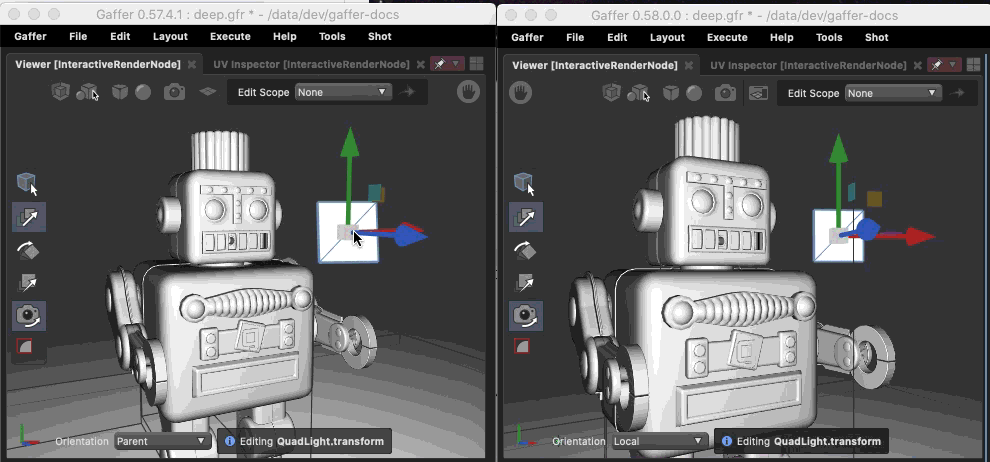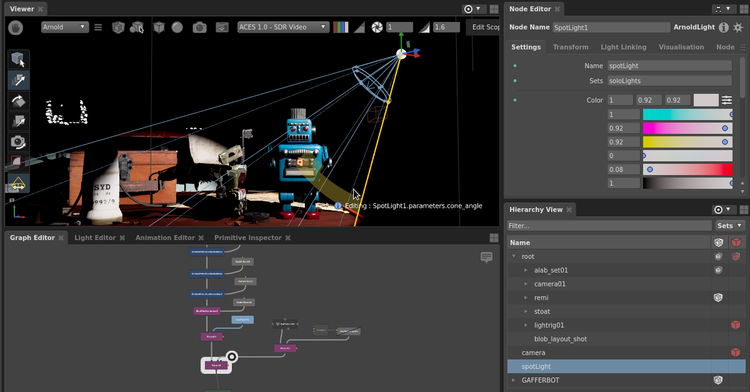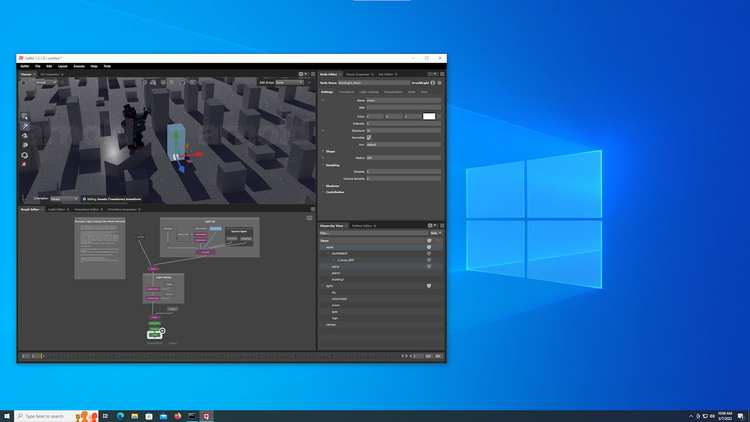Gaffer 0.58.0: Performance improvements
Gaffer 0.58.0 contains a lot of behind-the-scenes work to improve interactive performance. We hope these will improve your day-to-day working life in the application. Read on to learn more...
Interactive updates

Gaffer 0.58 is much better at tracking what might need to be updated when you make changes to a node's plugs. The above animation shows the difference this makes when dragging a light around in a scene that makes use of many sets along with an instancing setup.
tipThese changes mean that in some situations, the structure of your graph can have more of an impact on interactive performance than it did before. Generally speaking, it can help to parent in things you will be frequently editing, such as Lights, etc.. as late as possible, and define logically separate chunks of your scene in separate branches, then parent. Especially if the nodes make use of FilterResults, such as the Set node.
Viewer LUT on the GPU

The Viewer's Exposure, Gamma and Display Transform is now calculated on the GPU. This results in much faster updates when dragging exposure/gamma values, and reduces Gaffer's CPU overhead during IPR renders with fast bucket updates.
GPU processing is enabled by default, but can be turned off from the LUT Mode menu (

) or toggled by pressing <alt>-g. GPU processing is faster, but can be less accurate with certain LUTs, depending on your hardware.
Multi-threaded bounds computation
We've improved the performance of bounds calculation, when child locations are transformed/deformed.

